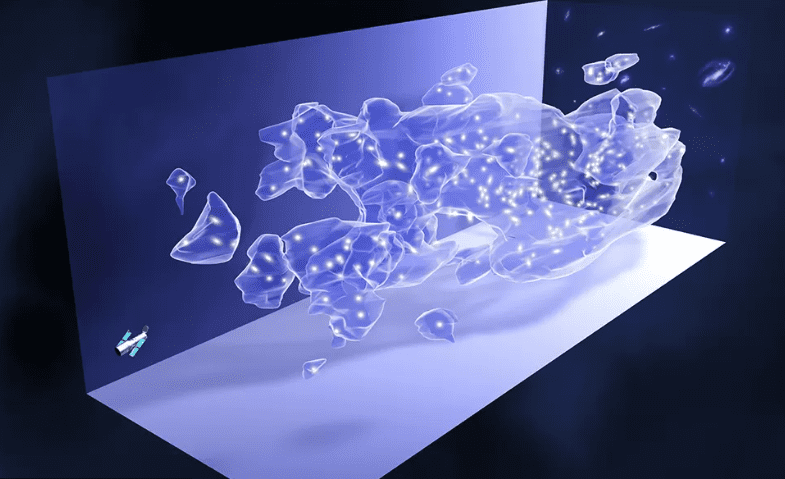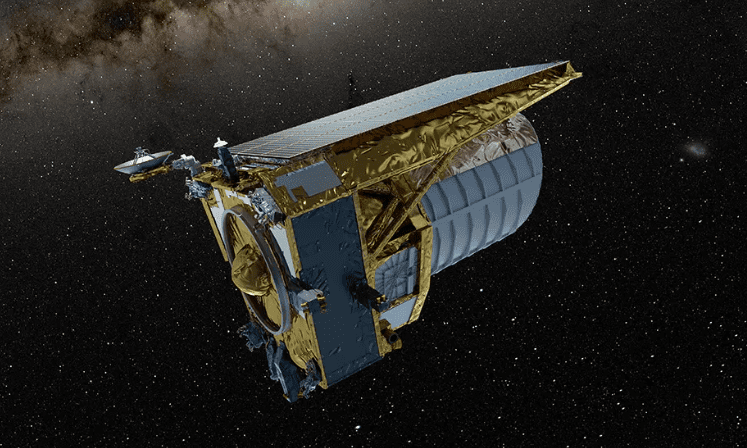A European space telescope that will launch from Florida will provide an answer to what the universe is made of, which is possibly the most important logical question. The Euclid project will create a massive 3D map of the Universe in order to identify some of the characteristics of purported dark matter and dull energy. These events appear to work together to extend and change the cosmos as we know it. Researchers concede that they know virtually little about them. To the unaided sight, dark energy and dark matter are invisible.

Prof. Isobel Hook argues that humans were unable to accurately explain our origins due of this large knowledge vacuum. The astronomer at Lancaster University in the UK asserts that using Euclid’s theories is our greatest opportunity to begin along the road to understanding.
 Picture Credit by: BBC
Picture Credit by: BBC
It would be similar like boarding a ship without knowing where land was in different directions. We’ll attempt to understand where we fit into the universe, how we got there, and how the entire cosmos evolved from the enormous blast to the astounding worlds we can see all around us, the Planetary group, and life itself.
Ghost particles from galaxies, shock waves from galaxies colliding, and the most accurate picture of the enigmatic dark matter have all been discovered in Antarctic ice. At 11:12 local time (15:12 GMT/16:12 BST), a Bird of Prey 9 rocket will launch the $1.4 billion (£1.2 billion) Euclid observatory from the Florida mainland. On the side of the planet that is furthest from the Sun, 1.5 million kilometers from Earth, Euclid will be dispatched to an observation post. Although the European Space Agency (ESA) is primarily responsible for the project, NASA played a key role in its research and engineering.
Euclid explored the mysterious world. According to earlier study, the universe’s total energy is made up of around 70% dim energy, 25% dull matter, and the remaining 5% is all visible matter, such as the sun, planets, stars, gas, and dust.
 Picture Credit by: BBC
Picture Credit by: BBC
Euclid’s six-year, two-pronged inquiry on the nature of the enigmatic 95% will take place.It is going to be vital to plan the dispersion of dim matter, which cannot be clearly seen but is known to exist due to gravitational repercussions for objects that should be visible.Systems, for example, couldn’t maintain their shape without the addition of a second “platform”. That’s what this tries to be: anything uninteresting.
Euclid’s six-year, two-pronged inquiry on the nature of the enigmatic 95% will take place.It is going to be vital to plan the dispersion of dim matter, which cannot be clearly seen but is known to exist due to gravitational repercussions for objects that should be visible.Systems, for example, couldn’t maintain their shape without the addition of a second “platform”. That’s what this tries to be: anything uninteresting.
Prof. Mark Cropper from the Mullard Space Science Laboratory at UCL stated, “The images it will produce will be enormous.” To actually display one image, you’d need more than 300 high-definition televisions.”

Picture Credit by: BBC
Dull matter is not the same thing as dull energy.This mysterious “force” seems to be speeding up the expansion of the cosmos. For recognising its existence and influence, three scientists shared the 1998 Nobel Prize in Physiology or Medicine.
Euclid will arrange a three-layered appropriation of worlds to investigate the oddity. Examples in the amazing voids that separate these things can be used as a kind of “measuring stick” to determine how far the extension has grown through time. Again, this has been accomplished for just a small area of the sky by ground-based surveys; however, Euclid will precisely estimate the positions of around 2 billion galaxies up to a distance of about 10 billion light-years from Earth. Then, says Surrey College professor Sway Nichol, “we can pose a few fascinating questions.”
Is the acceleration constant throughout the universe? Today, everything we measure is kind of averaged. But what if there is a difference in acceleration between here and there? That would be revelation science,” he told BBC News.
Although Euclid won’t be able to definitively state that “this is the nature of dark matter and dark energy,” it ought to constrain the models and notions that now rule study. It will focus on academics and experimenters. For instance, it could offer some clear justification for how to recognize the particles that are already known to handle a lot of dark matter. So yet, no searches have turned up any results.
When it comes to dark energy, Euclid may let scientists know that a modified gravity theory offers a better explanation than their present best idea, which is that it is not a fundamental characteristic of space’s vacuum. This would also go under transparency science.
“One possibility is that darkness is actually a fifth force, a new force in the cosmos that operates only on huge scales, so it doesn’t influence life here on Earth,” said Prof. Mark McCaughrean, Esa’s senior advisor for research and exploration.

Picture Credit by: BBC
“However, it definitely has the potential to have a significant influence on our Universe’s future. Is it going to keep growing and growing, progressing quickly forever? Or maybe everything will crumble once more.

